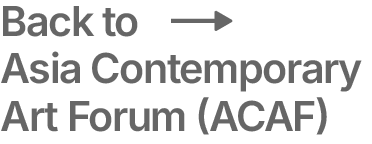Interview with Annu Palakunnathu-Matthew


1. How did you start making art?
My initial educational background was in the sciences. I was introduced to photography as an optional subject at my University in India. From what I remember, the class shared one camera and two rolls of film for the entire semester! Despite the meager resources, the class introduced me to photography and the possibilities of communicating ideas visually.
2. Briefly describe your art from the perspective of what it could tell us about you?
My work explores the experience of navigating between multiple cultures. Being born in England, growing up in India and now living in the United States, my varied background influences my point of view and opinions.
Drawing on my experience as a young woman growing up in India after a childhood in England, the portfolio “Bollywood Satirized” explores my own rejection of certain traditional women’s roles in Indian society, after experiencing more equality in England.
In “An Indian from India,” I look at the other “Indian.” I play on my own “otherness,” using photographs of Native Americans from the late Nineteenth Century and early Twentieth Century that perpetuated and reinforced stereotypes. I find similarities in how the Nineteenth and early Twentieth century photographers of Native Americans looked at what they called the primitive natives, in ways that is similar to the colonial gaze of the Nineteenth century British photographers working in India.
In the project “The Virtual Immigrant,” I explore the ways that workers in customer service call centers in India similarly navigate between cultures. They bifurcate their dress, speech and lives between the culture where they work, India and the western culture within the workplace they exist within. They seem to virtually live between cultures without leaving their country of origin.
My latest project, Re-Generations, explores the viewer’s connection to time and the warping of cultures over time. I collapse the presumed progression of time, so the past and present, Indian and Western appear here in the same virtual space.
3. What experiences have most influenced your choice of subject matter, medium and style?
I have long been interested in photography because of its connection to reality and our perception and assumptions about that supposed reality. My images often start with existing photographic material (Bollywood Satirized, An Indian from India, Re-Generations) that I then reinterpret to communicate my concepts.
4. Is your formal or informal training as an artist useful? How?
My later formal training as an artist gave me the technical skills to be able to communicate visually and the conceptual skills to understand what I was trying to communicate. An informal supportive group of photographers and friends also gave me the same support. My past background in mathematics has enabled me to easily learn technology.
5. Does your work reflect issues in yourself, in society or community?
My work definitely reflects my experiences and my interests. It explores issues that are important to me and also transcend to a larger audience. (An Indian from India, The Virtual Immigrant and more recently Re-Generation)
To communicate ideas and points of view that we may not have considered and for this work to seamlessly intertwine both the aesthetic and conceptual/political.
6. Do you appreciate culturally specific works of art? If so how does your personal and cultural background show up in your work?
I appreciate work that has something to say and has a strong visual component. I often find that the work that is the most intriguing to me is work by immigrants that reflect their experience of living between cultures. Examples are Hiroshi Sugimoto, Abelardo Morel and Shirin Neshat. My own cultural background does show up in my work and I try to frame that within a more universal voice based on the concepts that I am exploring.
7. Is there anything you would like to say about your local art scene or the international art market, art education, and or system for art exhibition?
I think there is a strong need for a fine art photography program within a university context in India. This would enable artists to appreciate, understand and apply the history of photography and imaging technology, in order to expand the range of photographic work being done within the country.
8. How does your current portfolio fit into the rest of your body of work?
Re-Generations is a bit of a departure from my recent work. First, it is more collaborative than any of my previous projects and the final work is also more open ended in terms of what it conveys. Receiving a MacColl Johnson Fellowship allowed me to experiment and explore a number of ideas. Not having to predefine the work for funding allowed the parameters to be more undefined.
The ephemeral animated movies are a combination of a scan of an archival image and recent photographs of three generations of women, which magically flow one into another.
As we know, flipping through a family album, we become more cognizant of the histories and memories of our and other families. Using digital technology, I reorient the viewer’s connection to time, as I collapse the presumed progression of its borders, so the past and present appear here in the same virtual space.
These animations weave in and out of moments in time, allowing the viewer to simultaneously ponder the history, future and aging of the subjects. This malleability leaves the viewer to wonder where the past and present overlap and warp. Here, history is distorted, evoking a new dimension of memories, which is uniquely digital.
To see more of Annu’s work, visit www.annumatthew.com



